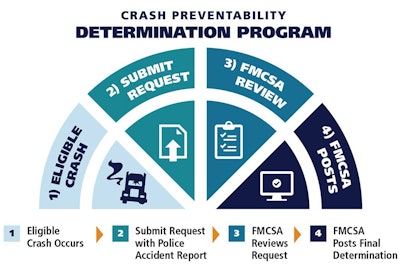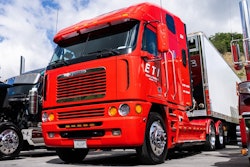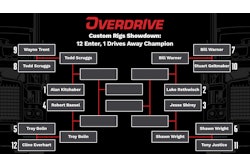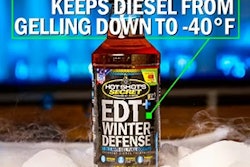
Law enforcement agencies around the nation are required to report any motor carrier's crash that involves a tow-away of a vehicle, an injury or a fatality to the Department of Transportation. These "DOT-recordable" crashes then become part of the carrier's record -- that includes those of independent owner-operators with motor carrier authority.
In late 2024, the Federal Motor Carrier Safety Administration's moved forward with updates to its Crash Preventability Determination Program, which allows motor carriers and drivers, including independent owner-operators, to submit such crashes for evaluation of whether they were preventable or nonpreventable.
Why would you want to do that? A nonpreventable judgment excludes the crash from computation of your CSA scores in the Crash Indicator measurement category associated with your business/leasing motor carrier's record in the system, thus ensuring you're not penalized for an accident you had no way of preventing.
FMCSA first introduced the CPDP in 2020, allowing for a narrow set of eligible crashes to be reviewed, yet over time, the additions of new crash types have significantly expanded the utility of the program particulalry for owner-operators with dashcams and other video systems onboard -- the crash types now include any crash for which video evidence shows the full sequence of the crash.

The process for requesting a review takes place through the FMCSA's DataQs system, and recommendations contained in the prior part of Partners in Business about other DataQs requests for data review (RDRs) pertain equally to preventability review requests.
There's anecdotal evidence smaller carriers, including owner-operators with authority, haven't been taking advantage of the program to the extent larger fleets have. If you're not filing crash reviews, you're leaving possible improvement in CSA Safety Measurement System scores on the table. Those scores could hold future import for safety rating with FMCSA's efforts to revamp the rating process.
Some around trucking feel, too, that If you never request a crash review in cases that might be nonpreventable, reality is that the crash might be de facto assumed to have been preventable by anyone using the SMS there. That includes insurers, brokers and shippers, and federal and state safety auditors.
Minus nonpreventable determinations with one too many crashes, you could easily have "made the audit list," in the words of one compliance and safety consultant, putting your business at risk.
In addition to the catchall crash category where video evidence from your dashcam or other sources shows the full sequence of events, there are now 20 different crash types eligible for review, including when your truck was:
- Struck in the rear by a motorist.
- Struck on the side at the rear by a motorist.
- Struck on the side by a motorist operating in the same direction as the truck.
- Struck because another motorist was driving in the wrong direction.
- Struck because another motorist was making a U-turn or illegal turn.
- Struck while legally stopped at a traffic control device or parked, including while the vehicle was unattended.
- Struck because another motorist did not stop or slow in traffic.
- Struck because another motorist failed to stop at a traffic control device.
- Struck because another individual was under the influence (or related violation, such as operating while intoxicated), according to the legal standard of the jurisdiction where the crash occurred.
- Struck because another motorist experienced a medical issue which contributed to the crash.
- Struck because another motorist fell asleep.
- Struck because another motorist was distracted (by their cellphone, GPS, passengers, or other source).
- Struck by cargo or equipment from another vehicle, or debris (for example fallen rock, fallen trees, unidentifiable items in the road).
- In a crash that was the result of an infrastructure failure.
- In a crash that involved an animal.
- In a crash involving a suicide death or suicide attempt.
- Struck because another motorist was entering the roadway from a private driveway or parking lot.
- Struck because another motorist lost control of the vehicle.
- Involved in a crash with a non-motorist.
- Involved in a crash type that seldom occurs and does not meet another eligible crash type (odd situations like being struck by an airplane or skydiver or being struck by a deceased driver in another vehicle).
Find more recommendations pertaining to, and emphasis on the importance of, preventability reviews in the following 2024 edition of the Overdrive Radio podcast, featuring a talk by compliance consultant Rick Gobbell at the annual conference of the National Association of Small Trucking Companies.
Gobbell's talk aimed to drill home the importance of the crash review system, lending the benefit of his own experience assisting others in DataQs filings. The talk was conducted before FMCSA adopted new crash types as eligible in the system, yet Gobbell believed expanding those types would be a huge improvement and of particular benefit to the smallest carriers. But again, you've got to file for review through DataQs to take any advantage. More on how to do that, and why, in the podcast and via resource links below.
Find more DataQs resources here at OverdriveOnline.com via the following links:
- How to request a data review for an eligible crash
- Overdrive's 2021 series exploring inequities in the DataQs system and ideas for improvement also includes plenty in the way of DataQs advice/tips.
- How to mount an effective DataQs challenge to a violation or crash







